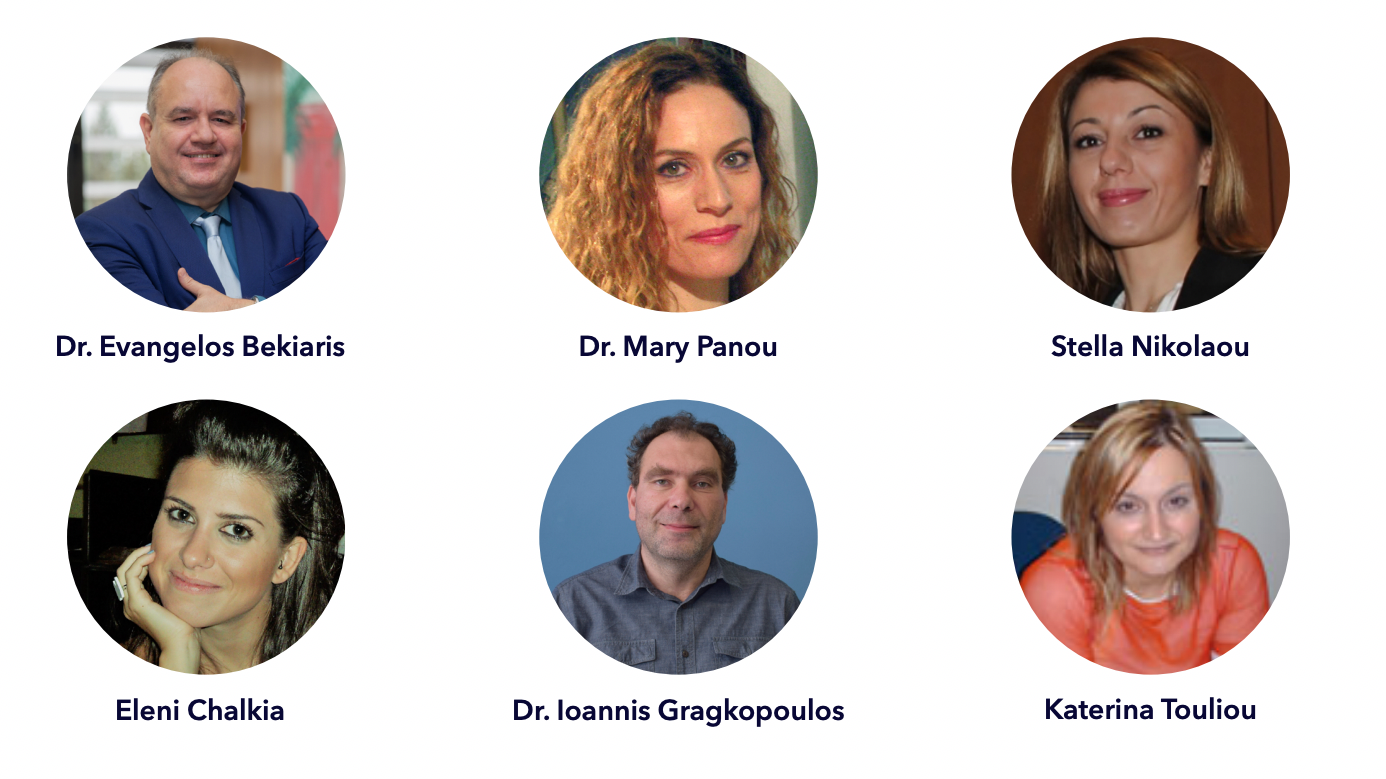MEET THE SAFE-UP PARTNERS
Hellenic Institute of Transport (HIT) of the Centre for Research and Technology Hellas (CERTH)
Who belongs to your SAFE-UP team?
SAFE-UP’s CERTH team is truly interdisciplinary. It consists of experienced professionals with a deep specialisation in their field, collectively catering to the project’s needs. Dr. Evangelos Bekiaris (Director of CERTH/ HIT) and Dr. Mary Panou (Head of the Department ‘Human factors & Vehicle Technology’) are leading the core team that consists of 4 additional highly qualified researchers. Ms. Stella Nikolaou is experienced in ergonomy and her fields of expertise encompass driver state/behaviour monitoring, vulnerable road users’ active safety and human factors research on road safety and automation. Ms. Eleni Chalkia has an M.Sc. in transport and is experienced in transport safety, VRU safe mobility, as well as road safety-related life-long training. Dr. Ioannis Gragkopoulos is an Electrical Engineer experienced in the areas of telecommunication networks, vehicle telematics, navigation, embedded systems and sensor networks. Ms. Katerina Touliou is an Experimental Psychologist with extensive competence in sensory perception in drivers, riders (cyclists/motorcyclists) and vulnerable groups of users, in relation to safe mobility and behaviour.
What does CERTH bring to the project?
CERTH brings great added value to SAFE-UP since it’s one of the top research centres in Europe. Our main objective is to conduct and support applied research activities in the field of transportation in Greece and across the EU. Specifically, the centre focuses on issues related to the organisation, operation, planning and development of infrastructure, standardisation, economic analysis, management, vehicle technology and the impact assessment of land, maritime, air, and multimodal transport services. CERTH/HIT has participated in more than 100 transport-related projects, several of which are related to VRU safety (as approached in SAFE-UP’s Demo 4), such as Safeway2school and SAFERIDER in the FP7 framework, as well as ADAS&ME and AUTOPILOT in the Horizon framework. HIT also has extensive experience in the development of training and educational programmes related to road safety, through its involvement in research projects, as well as relevant national initiatives, like the e-Drive academy (of the Greek Ministry of Infrastructure and Transport) and the TAP (Trans-Adriatic Pipeline).
Why did you want to take part in SAFE-UP?
SAFE-UP provides a unique opportunity for all participating organisations to collaborate in a highly ambitious and well-structured research project with innovative objectives and a strong, highly qualified consortium. Specifically for CERTH/HIT, participating in SAFE-UP is an opportunity to advance our technical know-how on vulnerable road users’ active safety through connectivity, by developing a C-ITS-based bilateral communication system between VRUs and vehicles, as well as the related on-time warnings for all actors. We will also apply and extend our knowledge and broad expertise in training, education and awareness strategies in road safety techniques to the challenging field of future mixed/hybrid (automated) traffic scenarios.
Which other initiatives are you involved in?
CERTH/HIT is currently involved in two related initiatives. The first is the SHOW project (www.showproject.eu), a large-scale innovation action, in which it acts as the project’s technical manager. The main objective here is to support the deployment of shared, connected and electrified automation in urban transport to advance sustainable urban mobility. The second is the 5G-ROUTES project (www.5groutes.eu), another large-scale innovation project, this time focused on CCAM deployment of 5G over the Via Baltic corridor. Here we are involved in three technical use cases relevant to vulnerable road users’ safety, with the aim to investigate the 5G technology potential over the traditional ITS-G5 communication, expecting to demonstrate lower network latency and enhanced accuracy of the positioning of the connected vulnerable road users (pedestrians and cyclists).
Related deliverables
D3.4 Demo 4 System for on-time warning provisions to VRUs and drivers in critical conditions
D5.1 REQUIREMENTS FOR IMPACT ASSESSMENT
D5.2 SAFETY IMPACT ASSESSMENT – INTERMEDIATE REPORT
D6.1 Training, education and awareness needs for VRU/URU safety in evolving mixed automated traffic

